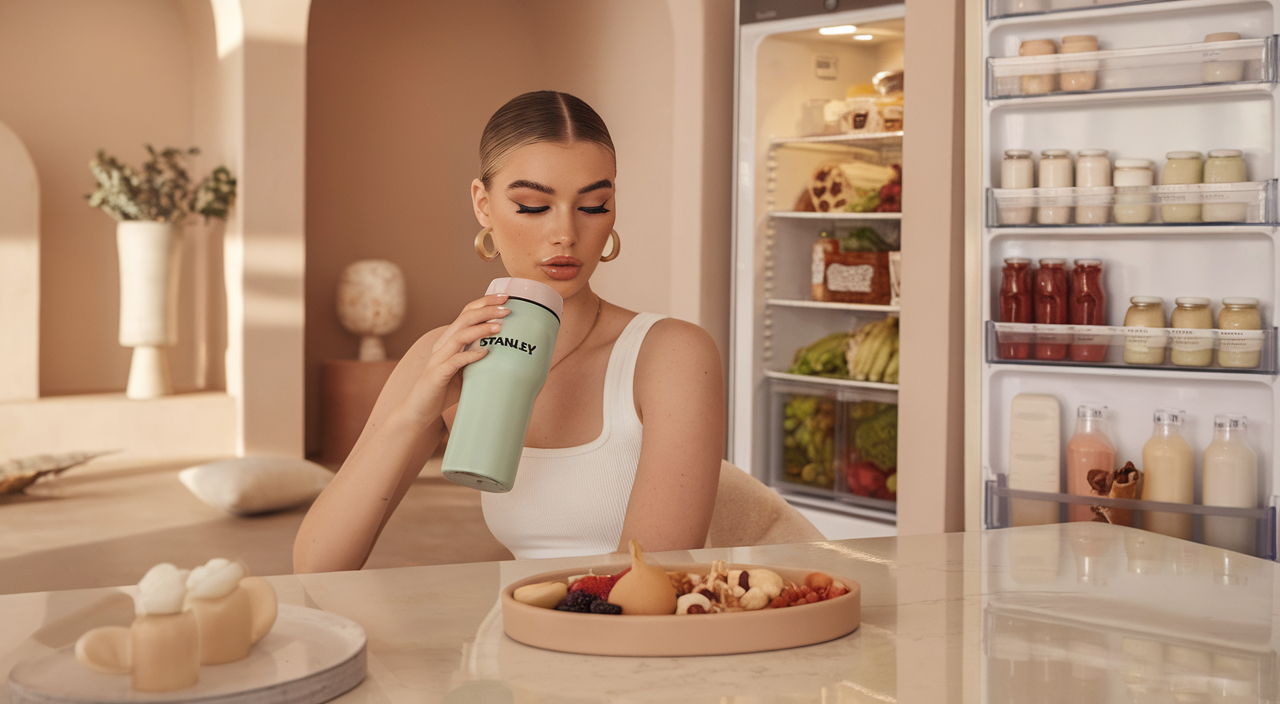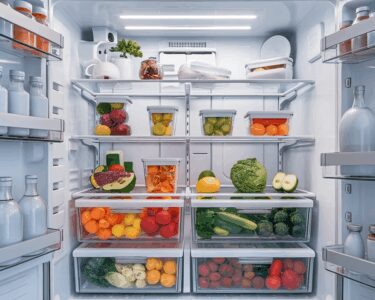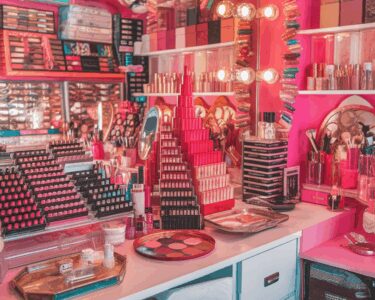The Clean Girl Aesthetic has grown from a beauty trend into a lifestyle movement with over 4 billion TikTok views, turning daily routines into carefully crafted rituals focused on minimalist beauty, slicked-back hair, and wellness practices. This trend has attracted dedicated followers who appreciate its simplicity alongside critics who question its promotion of costly products, unrealistic standards, and potential harm to mental health.
Key Takeaways
- The aesthetic combines a “no-makeup makeup” look with slicked-back hair, gold jewelry, and neutral fashion choices that extend into home decor and lifestyle practices.
- Participating in the Clean Girl Aesthetic can be costly, with essential products like Rhode Peptide Fluid ($29), Glossier Boy Brow ($17), and Stanley cups ($45) becoming status symbols among followers.
- Critics compare the movement to religious devotion due to its strict morning rituals, product requirements, and the evangelical following it has created around specific lifestyle choices.
- The trend has been criticized for reinforcing exclusionary beauty standards that typically favor those with clear skin, straight hair, and specific facial features.
- The pressure to maintain perfect Clean Girl aesthetics can trigger anxiety, perfectionism, and orthorexic tendencies, creating mental health challenges rather than the promised sense of calm.
The New “Clean Girl” Movement: A Deep Dive Into Beauty’s Latest Obsession
Understanding the Clean Girl Aesthetic Cult Phenomenon
The Clean Girl Aesthetic Cult has taken social media by storm, with the #cleangirl hashtag racking up an impressive 4 billion views on TikTok. I’ve noticed this isn’t just another fleeting trend – it’s a complete lifestyle transformation that’s reshaping how we approach beauty and wellness. Just like the fridge restock aesthetic movement, this trend celebrates organization and mindful living.
The visual signature of this movement centers on achieving that perfect “no-makeup makeup” look, paired with slicked-back hair and minimalist gold jewelry. It’s fascinating how the Clean Girl Aesthetic Cult has transformed basic daily routines into aesthetic rituals, similar to how the aesthetic meal prep trend changed our relationship with food preparation.
Essential Elements of the Clean Girl Look
The core components that define this aesthetic combine simplicity with intentionality. While the look appears effortless, I can tell you it requires specific products and techniques to achieve that perfect clean girl glow. Here’s what you’ll need to nail the aesthetic:
- Dewy skin achieved through strategic concealer placement
- Cream blush for that natural flush
- Clear brow gel for perfectly brushed-up brows
- Hydrating lip oils for subtle shine
The Clean Girl Aesthetic Cult extends beyond makeup into wardrobe choices, favoring neutral pieces that complement the beige aesthetic trending in home decor. This cohesive approach creates a harmonious look that flows from personal style to living spaces, much like the careful curation seen in snack plate aesthetics.
The movement pulls inspiration from 90s minimalism but adds a modern twist with its emphasis on wellness routines and morning rituals. Hydration tracking, skincare routines, and mindful practices aren’t just add-ons – they’re fundamental to the lifestyle. What makes this trend stick is its focus on holistic well-being while maintaining an aesthetically pleasing exterior.
Inside The Clean Girl Cult: Why Critics Compare It To Religious Devotion
The Clean Girl Aesthetic Cult: Daily Rituals and Requirements
I’ve noticed how the Clean Girl Aesthetic Cult has transformed everyday routines into sacred rituals. Just like religious practices, followers stick to strict morning ceremonies – starting with that perfect matcha latte, always served in a status-symbol Stanley cup, followed by an intricate skincare ceremony.
The dedication to these routines mirrors religious devotion, with followers spending significant money on must-have products. Here’s what a basic Clean Girl starter kit costs:
- Rhode Peptide Glazing Fluid – $29
- Glossier Boy Brow – $17
- Stanley Quencher – $45
- Daily matcha supplies – $50+ monthly
The Price of Clean Girl Aesthetic Cult Perfection
The aesthetic demands more than just buying products – it’s created an almost evangelical following around specific lifestyle choices. I’ve seen how this extends beyond beauty into perfectly arranged snack plates and meticulously organized fridges.
The movement’s influence is clear in how quickly products sell out. When a Clean Girl Aesthetic Cult influencer mentions a product, it often disappears from shelves within hours. This purchasing power has turned simple items like minimalist dinner plates into coveted status symbols.
Critics point out how this aesthetic reinforces exclusionary beauty standards. The “clean girl” look typically favors those with clear skin, straight hair, and specific facial features. The time commitment required for these routines can be substantial – from daily aesthetic meal prep to elaborate skincare regimens.
The devotion to this lifestyle has created a defensive community that often dismisses criticism. Members justify expensive purchases as investments in self-care, while critics argue this reinforces harmful class distinctions and traditional beauty norms. The aesthetic’s connection to WASP (White Anglo-Saxon Protestant) ideals hasn’t gone unnoticed, with some comparing its emphasis on cleanliness and order to historical standards of feminine propriety.
The Dark Side: Mental Health Impact and Privilege Problems
Hidden Costs of the Clean Girl Aesthetic Cult
I’ve noticed how the Clean Girl Aesthetic Cult has created unrealistic standards that can trigger anxiety and perfectionism. This lifestyle movement, while appearing simple on the surface, often leads to obsessive behaviors around food, appearance, and daily routines. Many followers find themselves caught up in a cycle of constant comparison, particularly when trying to maintain that picture-perfect fridge restock aesthetic or crafting the ideal aesthetic snack plate.
The pressure to maintain this aesthetic can push people toward orthorexic tendencies, especially when coupled with the expectation to create aesthetic meal prep content. The Clean Girl Aesthetic Cult promotes an idealized version of health that’s often more about appearance than genuine wellness.
Privilege and Exclusivity in the Clean Girl Aesthetic Cult
The movement’s foundation rests heavily on access to expensive products and services. Here’s what’s typically expected to achieve this look:
- High-end skincare from brands like Rhode Skin and Glossier
- Premium athleisure wear from Lululemon and Alo Yoga
- Specific body-sculpting pieces from Skims
- Regular access to organic, fresh produce
- Time for elaborate skincare and wellness routines
This aesthetic has faced criticism for promoting Eurocentric beauty standards, often showcased by influencers like Matilda Djerf and Hailey Bieber. Their interpretation of “clean” and “minimal” often requires substantial financial investment in specific products and clothing, making it inaccessible to many.
The constant pressure to document every aspect of this lifestyle on social media adds another layer of stress. From perfectly arranged beige plate aesthetics to meticulously organized spaces, this need for visual perfection can lead to reduced authenticity and increased anxiety about maintaining appearances.
The psychological impact becomes particularly concerning when followers can’t achieve these curated standards, leading to feelings of inadequacy and self-doubt. This creates a cycle where the pursuit of ‘clean girl’ perfection actually results in decreased mental well-being rather than the promised sense of order and calm.
The rise of minimalist makeup trends, often framed as empowering, can actually reflect deeper societal shifts, as explored in this analysis of modern beauty rituals.
Sources:
TikTok, Rhode Skin, Glossier, Lululemon, Alo Yoga, Skims








